Wild Child at The Landing Gallery

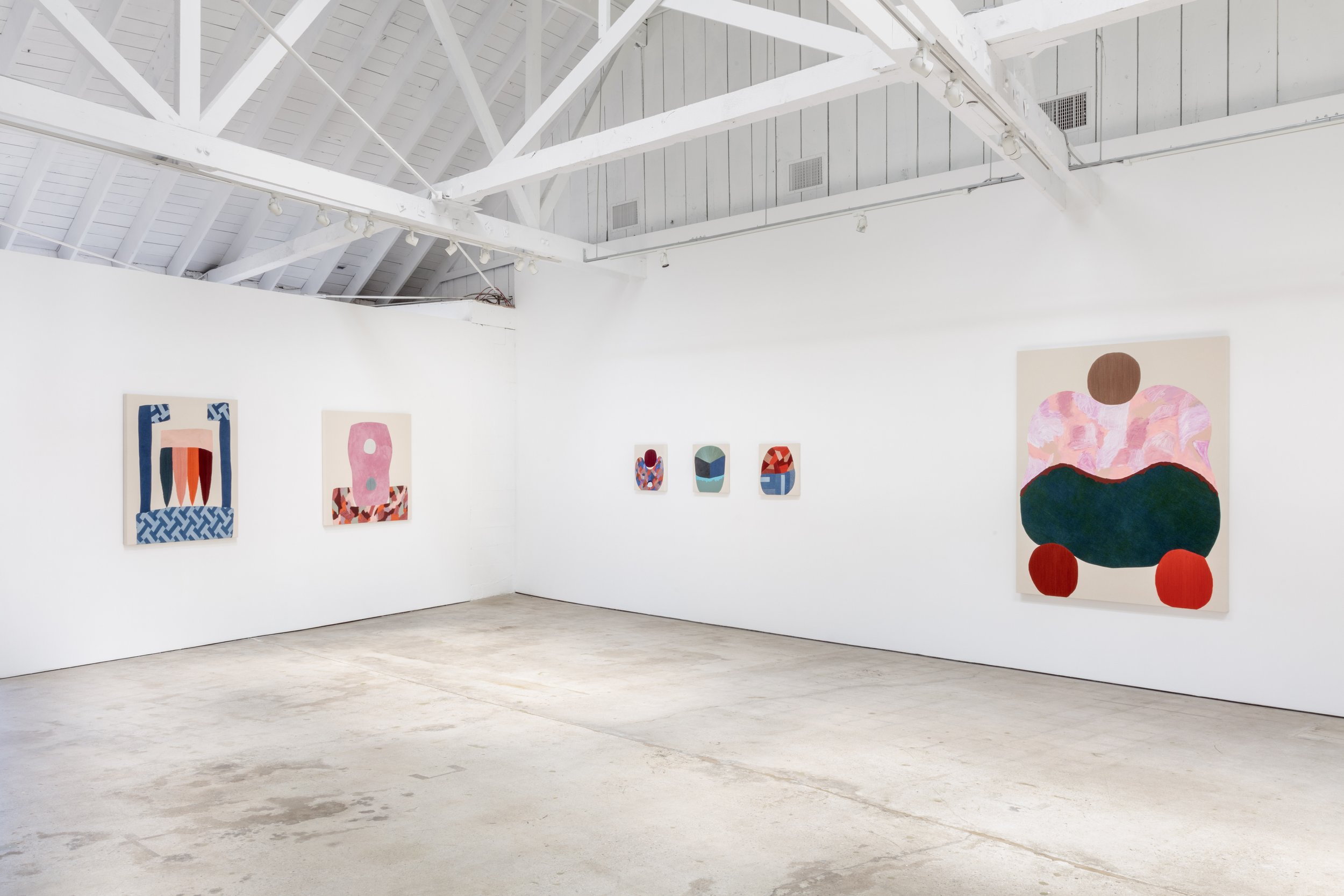
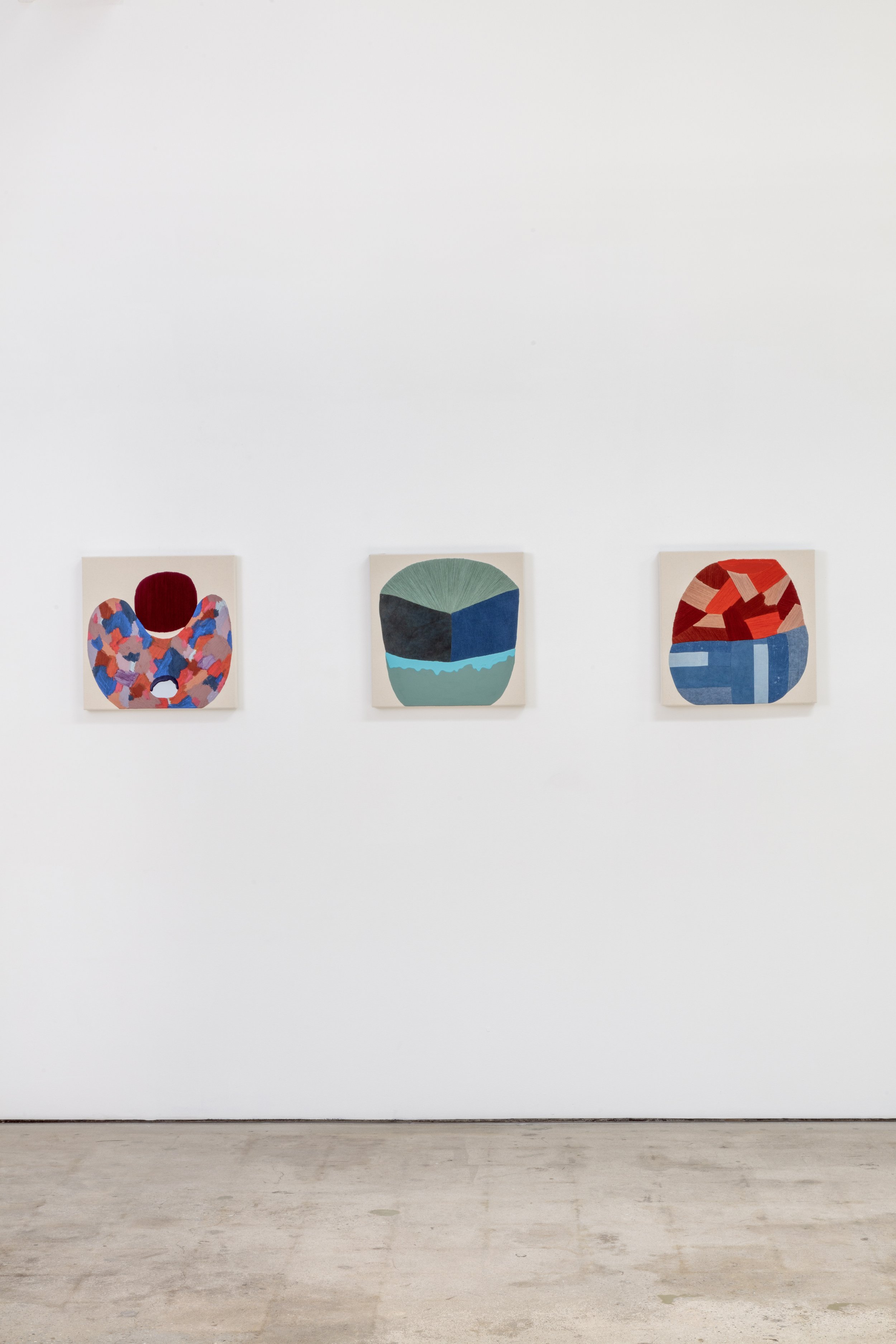
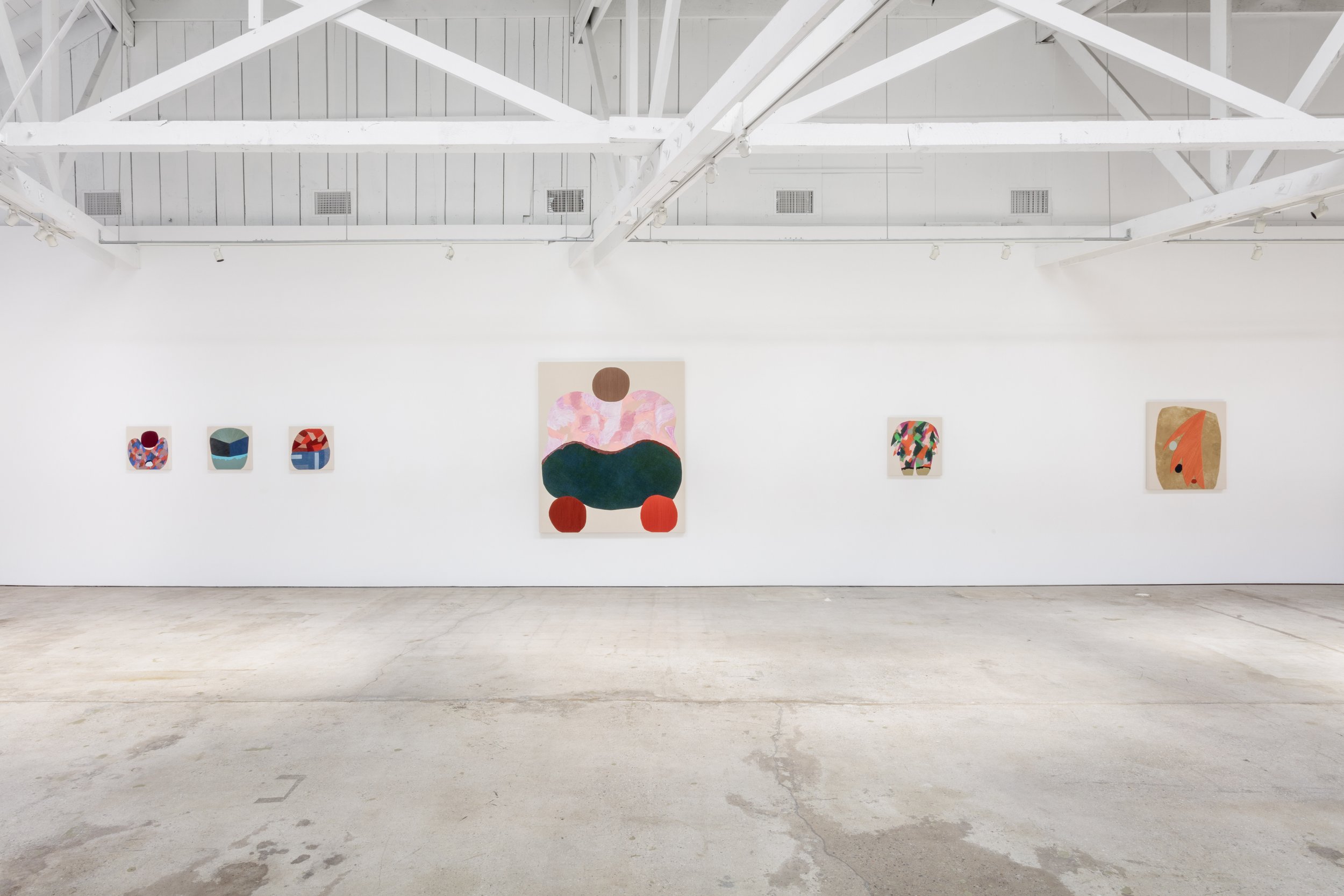
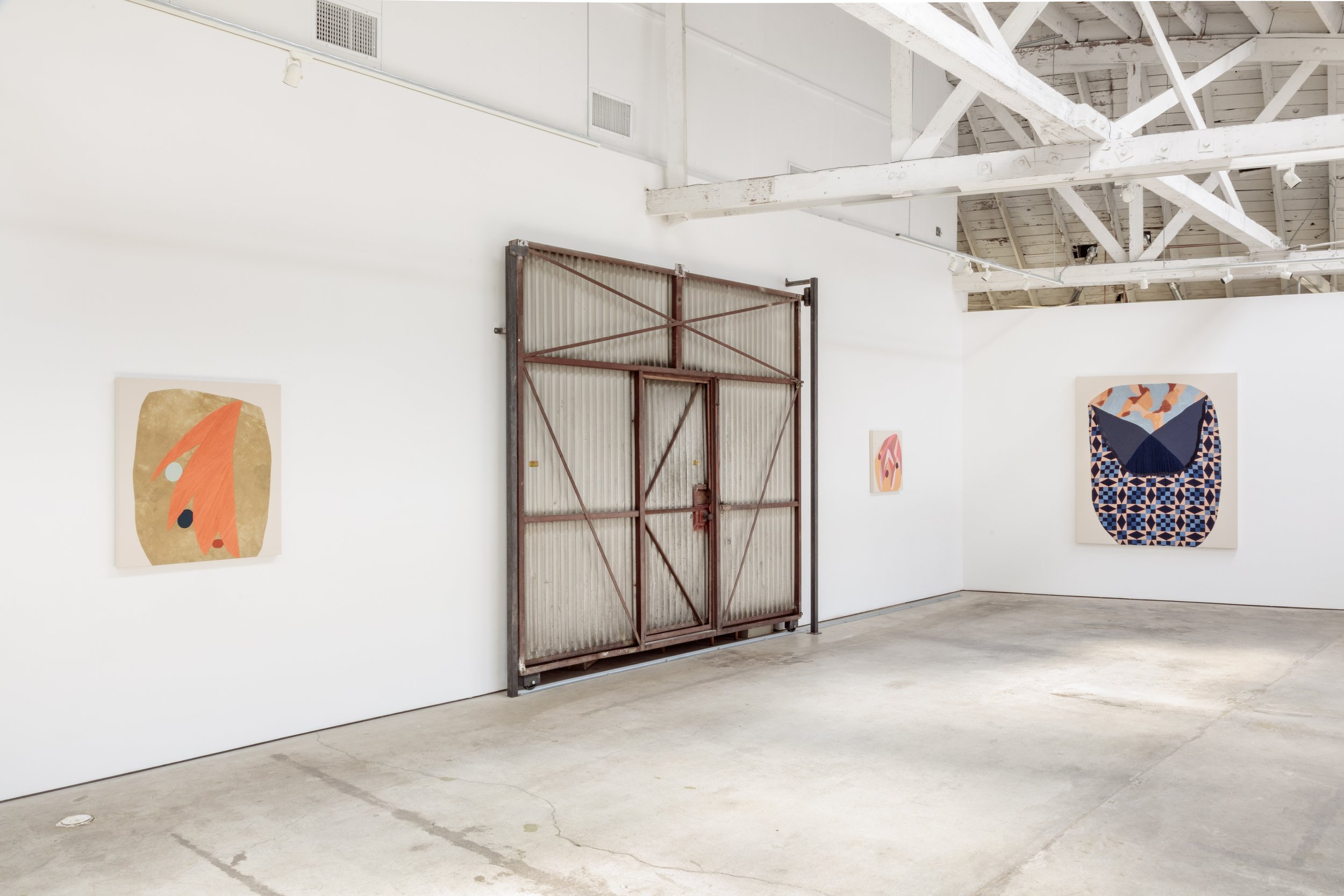
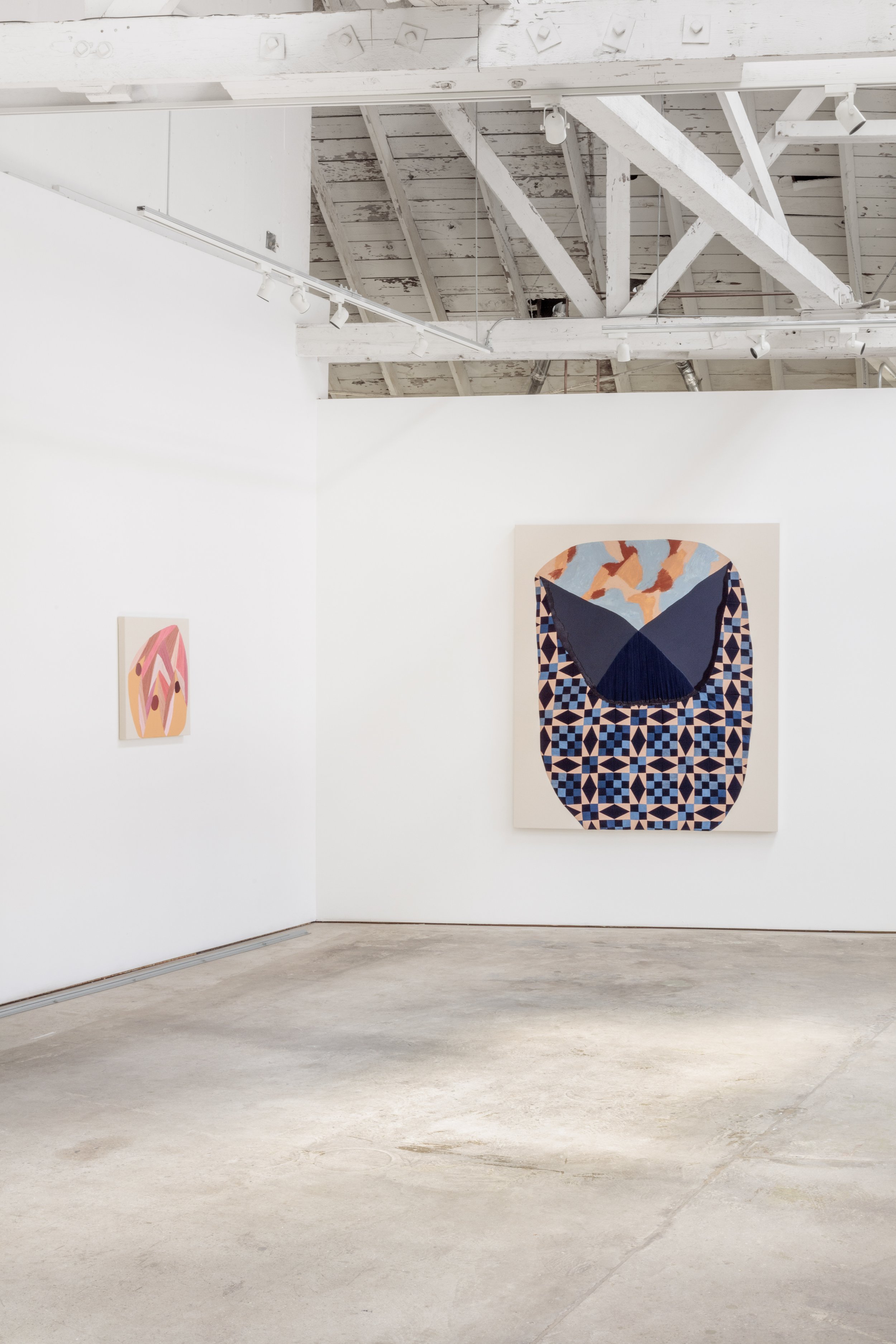

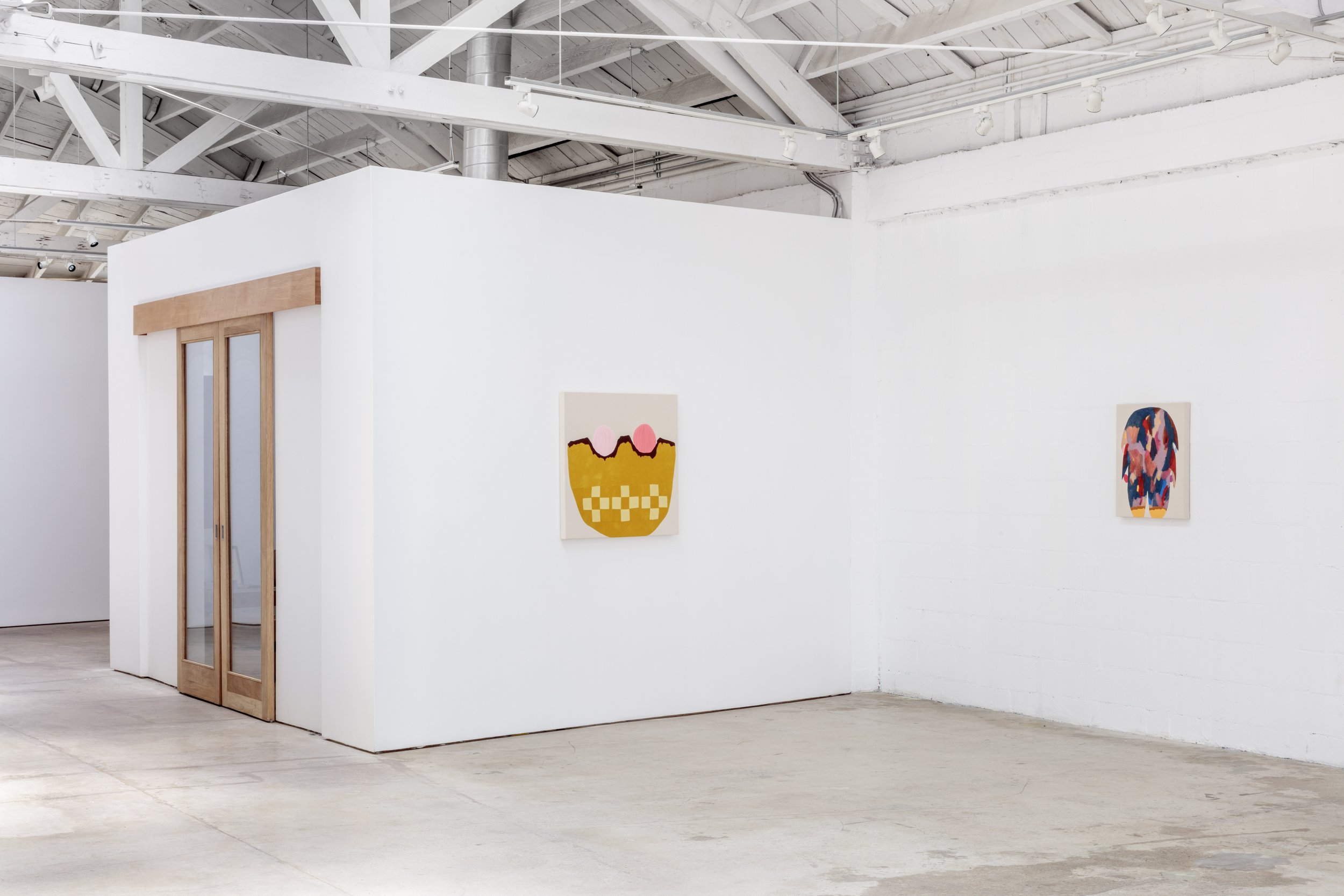

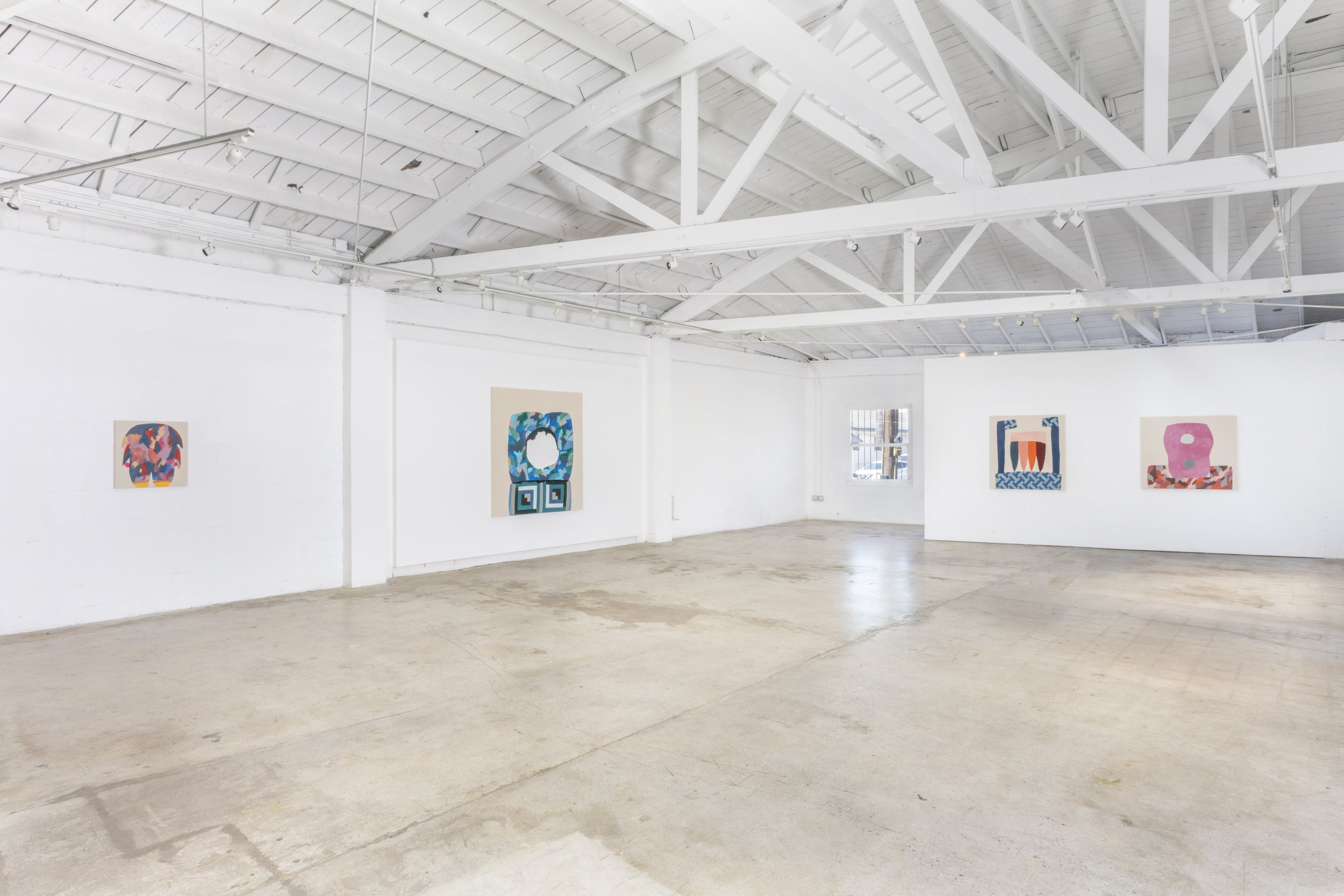
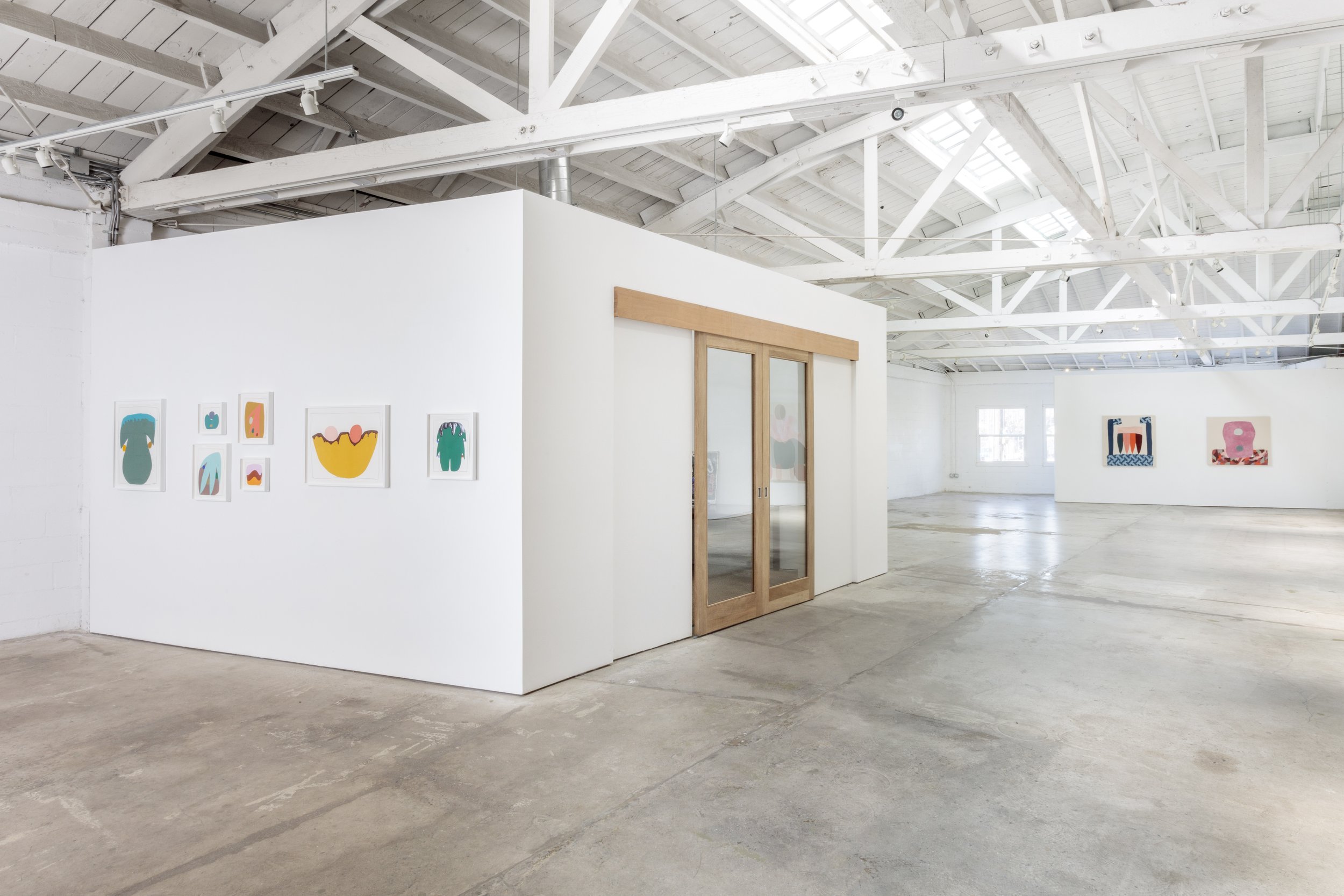
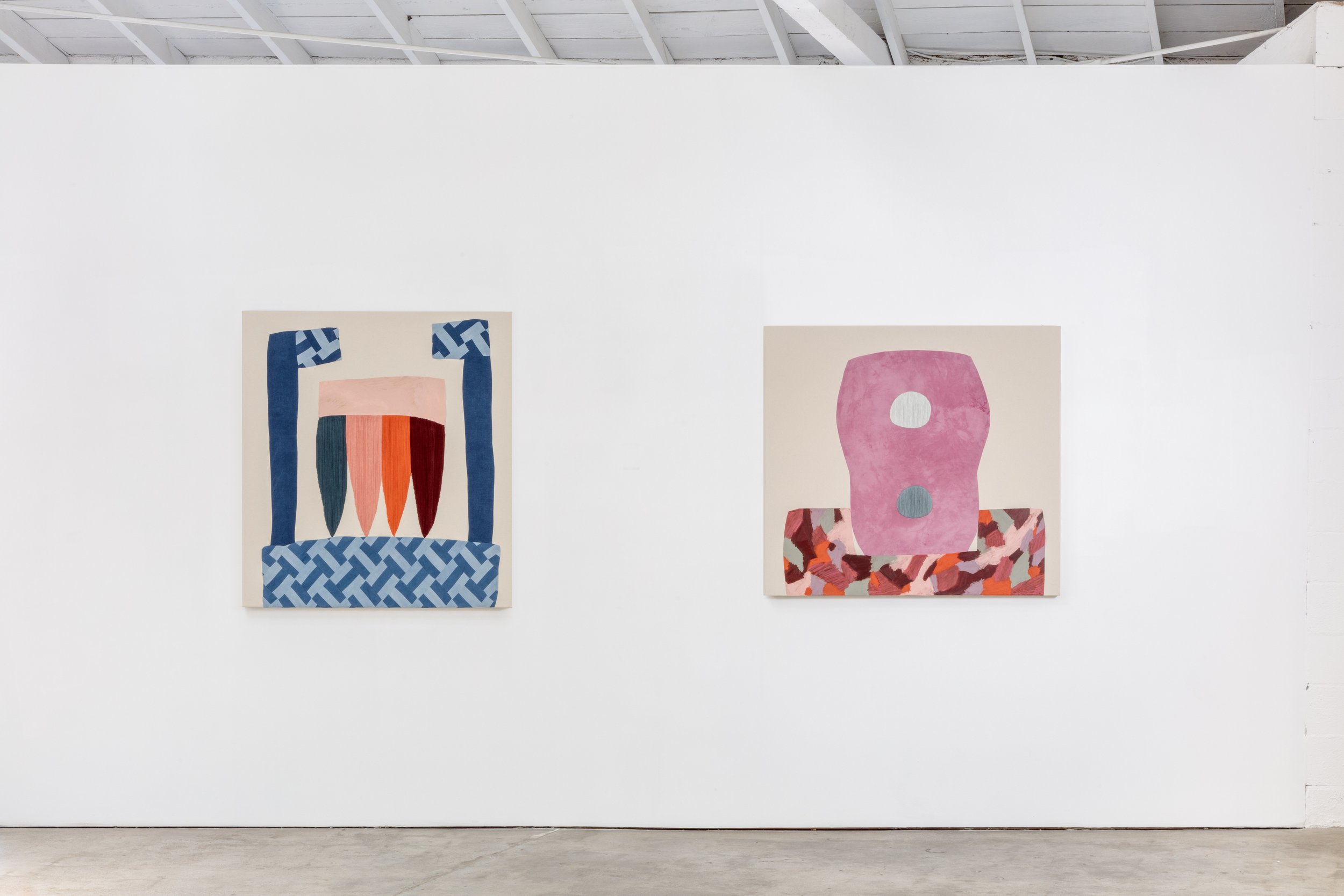
Press Release
The Landing is pleased to present Wild Child, the debut Los Angeles solo exhibition for New York based artist Amanda Valdez. Wild Child will be on view May 4th through June 15th, 2019.
Amanda Valdez creates abstract works on canvas that incorporate embroidery, quilting, oil stick on mounted paper, and hand-dyed and commercially sourced fabrics. Her engineered surfaces have a vivid sense of tactility — they incorporate fabric embedded into the canvas structure, raised paint on paper, and silky embroidery floss. The interplay between varying materials and processes, between hard-edged and soft forms, and between art histories contributes to the luminous energy contained in these abstract works. There are two major traditions being referenced: the painting tradition, which has historically been male-dominated, and the fiber art tradition, which has been primarily female. A tension between these two traditions is felt in Valdez’s highly personal yet historically-rooted practice.
One of the repeating motifs across Wild Child is a claw-like or concave form in combination with a circle. Says Valdez, “I’m looking at the tension there — the balance between the hard-edge, irregular, sharp form and the circle. These circles are flash points of things you’re responsible for; the works are exploring the slippage between these shapes, and also how things come together, emotionally and psychologically — the hard edges and the pressure points in trying to hold things together: that pressure in the body.” This new body of work was made while Valdez was at the artist’s residency 100 W Corsicana. Located in a rural Texas landscape, the residency provided her with a large second-floor studio with 360-degree views of the big, open sky from sunrise to sunset. The palette in these works — cool blues, greens and blacks alongside warmer pinks, reds, and ochres — speaks to the shifting colors of the Texas landscape, dawn to midnight. The large studio space allowed Valdez to work on several canvases at once, creating a common dialogue across the paintings and capturing the Texas glow of light, as seen in paintings such as Monastic Season and Grace III.
One of the major themes in the exhibition is the “through line of generations,” says Valdez, who was pregnant while making the work. “I was thinking a lot about two becoming three—the equation 1 + 1 = 3.” In the painting Our Favorite Rapture, two embroidered circles support a base which holds a third circle, nestled into the top of the frenetic formation. In New to Me, New to You, a soft, rounded shape surrounds a large, central circle, recalling incubation. Similarly, Wild Child 5 features two larger circles and one smaller one.
Valdez’s paintings evolve from an initial drawing process, with some drawings prompting her to explore their forms further. “Sometimes shapes stay deeply mysterious to me,” she says; “sometimes I can tell what’s influencing their nature.” While these forms can be read in terms of painterly abstraction, the paintings do incorporate specific quilting patterns with their own historic meanings. New to You, New to Me features a traditional log cabin quilting pattern connotative of home, with its red center square representing hearth, fire, and the center of the house. The circumferential fence post pattern in Wild Child 3 references the perimeter of the home.
Generational thinking is apparent in the paintings Wild Child 3–7, as well as the exhibition title. “I was my own wild child, and I think that energy went straight into my works once I transitioned from crazy adolescence into my mid-20s. I see the shapes in my paintings as a collection of ‘wild childs’. I was a wild child, my grandmother was a wild child, and I’m pregnant and preparing to have a wild child.” Generational thinking also influenced the paintings Pepper Pot IV & V . “That was something my mom’s mom would ask me on the phone when I was an out-of-control teenager — ‘Are you being a little pepper pot?’ That always stuck with me.” Pepper Pot V portrays an abstracted vessel in two distinct sections: the upper section is made up of luminous embroidered swaths in fiery red, brown and tan; this energized area is supported by a quilted section just below it, woven in a traditional pattern and rendered in comforting shades of blue. An energized interrelationship between sections of canvas activity — an active balancing between varying energies — is often at play in Valdez’s works.
Though personal themes influence Valdez in her practice, the eventual forms and compositions she arrives at remain open to the viewer. Only in titling the works does the artist give a poetic nod to the personal narratives at play in their making.
Press
"Amanda Valdez's art: part painting, part quilt, 100%" by David Pagel
Los Angeles Times
29 May 2019
Amanda Valdez, “Grace III,” 2019. Embroidery, hand-dyed fabric, acrylic, and canvas, 32 by 36 inches. (Charles White / JWPictures.com / From Amanda Valdez and the Landing)
Like painters everywhere, Amanda Valdez applies paint to canvases that have been stretched over sturdy supports.
But that’s just the start. She adds hand-dyed and commercially printed fabrics to her works — sometimes stitching blob-shaped sections to canvas, other times cutting holes in the canvas and patching them with precisely measured sections of fabric, as if repairing torn trousers without wasting an inch of cloth.
She includes embroidery and quilting, using the first to “draw” lines with shimmering, reflective threads and the second to create right-angled patterns within her wonderfully lumpy compositions. Valdez also makes loose, gestural drawings, in oil stick on paper, and then glues them to her increasingly complex canvases.
Despite the expanding inventory of materials (and rising number of techniques) that can be seen in “Wild Child,” each of the exhibition’s 15 canvases is taut and resolved, as blunt and vigorous as any Minimalist abstraction — and a whole lot more fun. At the Landing gallery, Valdez’s L.A. debut marries the visual sophistication of abstract painting with the virtuosity of handcrafted textiles and the irrepressible enthusiasm of a kid. It’s a knockout combo.
Valdez’s compositions are primitive: a bowl-like shape that cradles one or two smaller shapes; a single blob decorated with mismatched patterns; or a headless figure that might be the love child of the Venus of Willendorf and a pine cone — or the mongrel offspring of Max Ernst’s “The Elephant Celebes” and a misshapen Christmas tree. Seven small studies, in a rear nook, show Valdez developing her compositions.
Nearly all of Valdez’s works recall textbook diagrams of mitosis — single cells dividing into a pair of identical cells — but with a difference: No component in any of her cartoon-style abstractions is the same as any other. Large ones nestle small ones; bright ones nudge dark ones; plump ones abut pointy ones; messy ones neighbor tidy ones. All are related. But no two are identical.
5118 w Jefferson Boulevard, Los Angeles, CA 90016, 323 272 3194
The same goes for the materials each piece is made of: Valdez uses each one only once. Whether pouring on a puddle of drippy acrylic, quilting a neatly geometric section, collaging an oil-stick scribble, sewing in a hand-dyed fabric or embroidering an expanse of luminous thread, the Brooklyn-based artist never repeats herself.
“Once is enough,” each part of each piece seems to say. That chorus resonates throughout the exhibition, giving Valdez’s freewheeling mixtures of media and pleasure-seeking compositions a jolt of control that intensifies their impact.
The Landing, 5118 W. Jefferson Blvd., L.A. Wednesdays-Saturdays, through June 15.(323) 272-3194, thelandinggallery.com